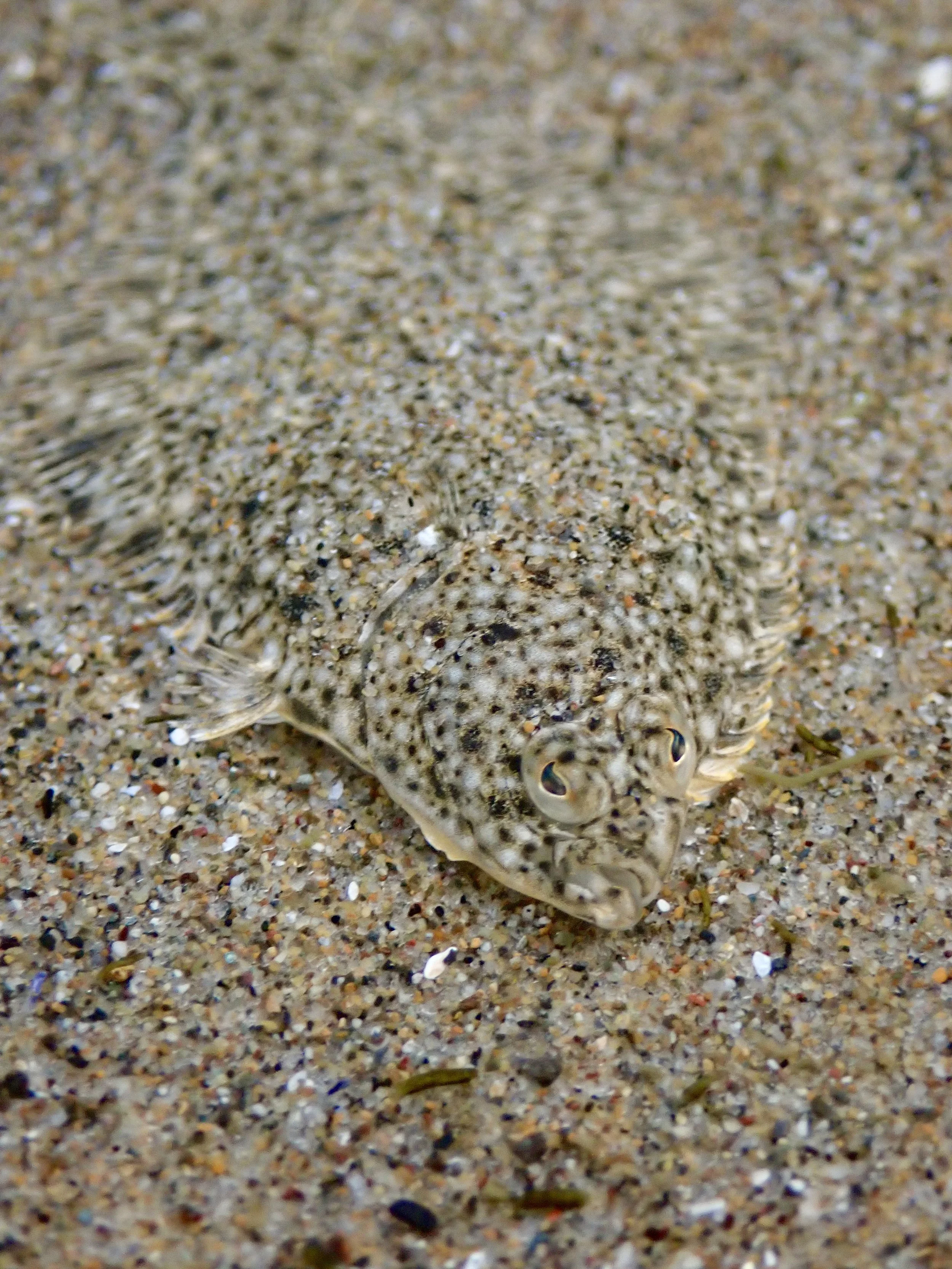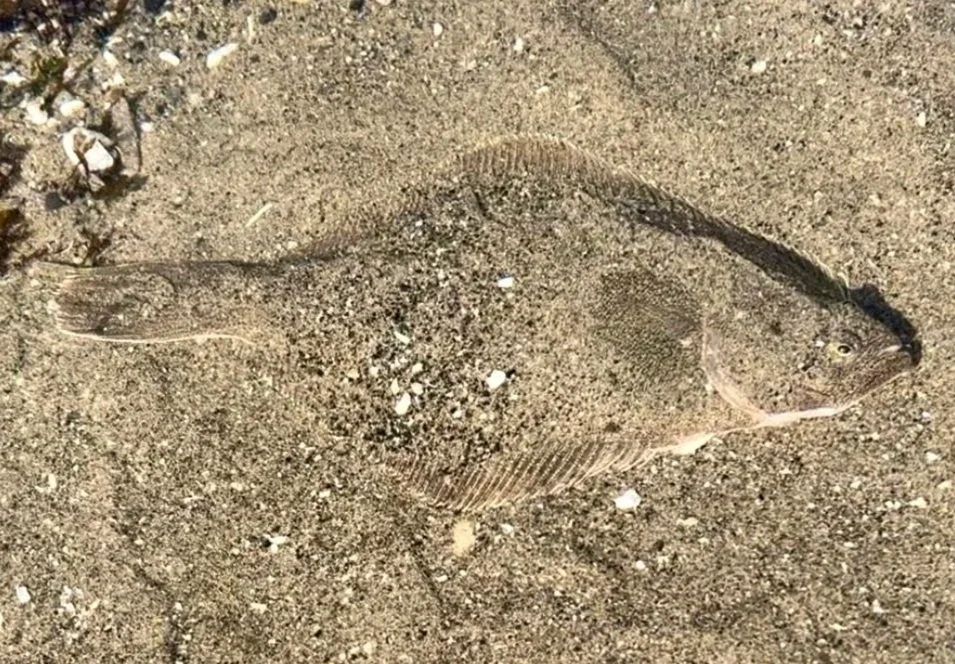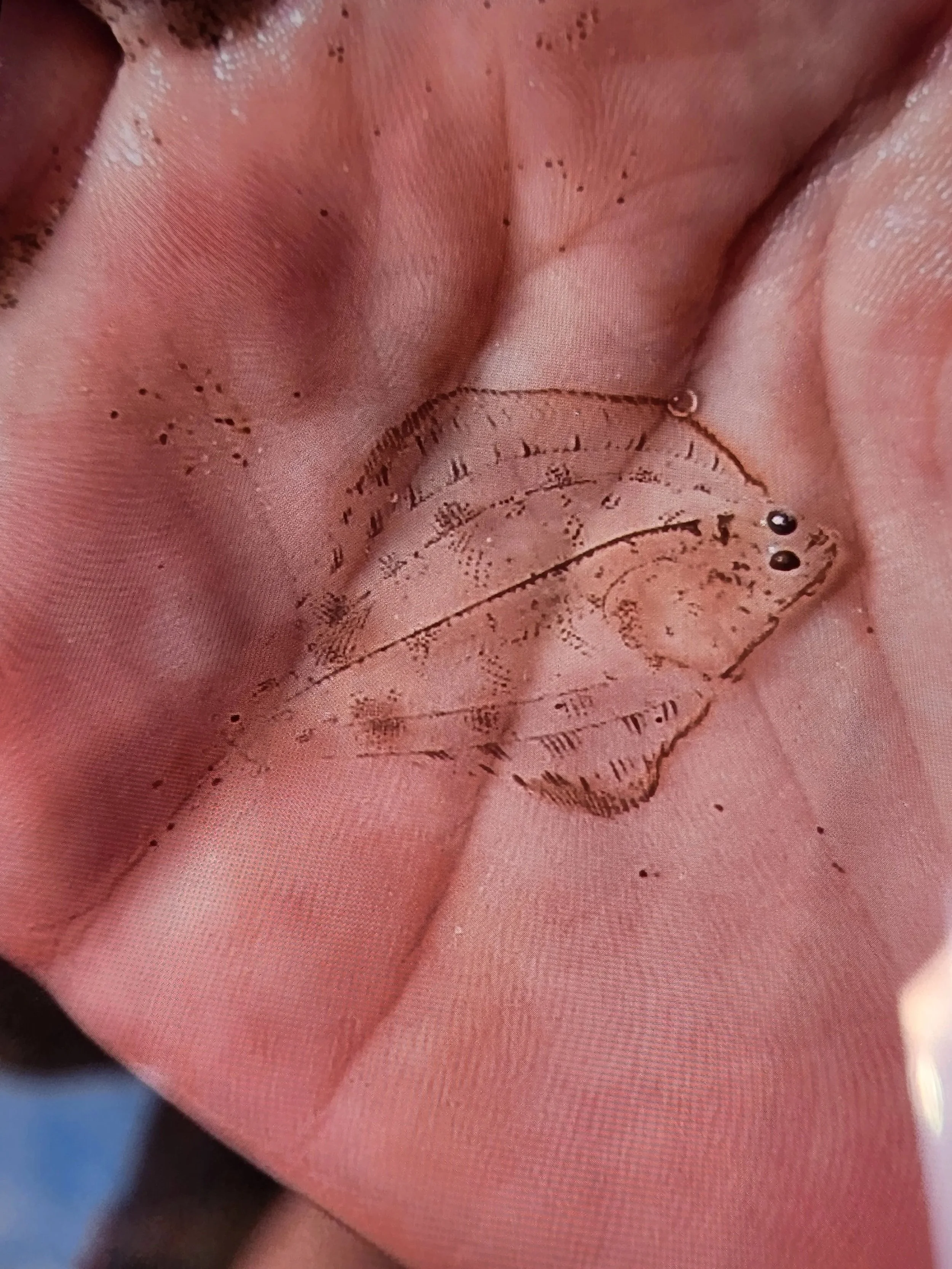Flatfish (Order: Pleuronectiformes)
(photo credit: Dani Nielsen)
(photo credit: Michelle Schwegmann)
Baby flat fish (photo credit: Katie Corliss)
Description: Flatfish as a group are easily identified by their flat body shape with their dorsal and anal fins being on the horizontal sides of their body. With this flattened body shape, both eyes are on one side of the body (the top side). The side of the body against the ground (the blind side) is often a lighter color than the top side. The top side of the fish is most often a tan or gray color that blends with the sand, making them hard to see. In the tide pools around Haystack Rock, we mostly find juvenile flatfish. To make finding them even more difficult, the baby flatfish can even be completely transparent! Some common flatfish we’ve seen include Pacific sanddab (Citharichthys sordidus), English sole (Parophrys vetulus), starry flounder (Platichthys stellatus), rex sole (Glyptocephalus zachirus), and Pacific dover sole (Microstomus pacificus).
Habitat: Their flat shape is designed for living on the sea floor in sandy or muddy areas. Between the variety of flatfish species, they occupy many different habitats from the nearshore to the deep ocean.
Diet: Flatfish mostly eat small fish, crustaceans, and invertebrates. As with most animals, the bigger fish eat bigger prey. Large flatfish may eat other fish or squid.
Tide Pool Tidbits:
There are more than 500 species of flatfishes found worldwide. They live in almost every ocean and large sea and even have some species in freshwater.
Some of these fish may be extra slippery from the slime they produce all over their bodies!
References: Oregon Department of Fish and Wildlife, American Oceans




